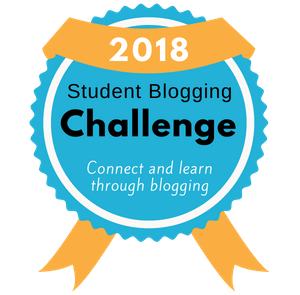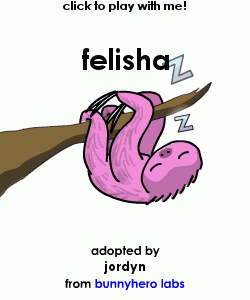Hello everyone and a big welcome back to my blog, My Dog Ate My Blog. As always, I am your host, Jordyn Eyton here to take you with me on my learning journey through high school and the PLP program at Seycove. But wait. This is a very important post, a milestone dare I say. This is my first blog post of my grade 12 year which is absolutely unbelievable. I don’t know how long these last four years has felt for you, my readers, but they have flown by for me. *queue sad music* Alright, enough with sentimental stuff! This is not my last blog post ever so let’s move on, let me set the scene and you can try to guess what this blog post will be about. Imagine, you are driving down the street and you see signs pitched all along the side. Red, green, blue, orange, purple. You turn on the TV and every second commercial (if you still watch cable TV) is either a politician explaining to you their solutions to all the worlds issues or one politician attacking another. Ok, I’ll give you one more hint:

Screenshot from https://youtu.be/HSA4nUO1P1g
You got it! Our Prime minister, Justin Trudeau, dissolved parliament on August 15th, 2 years in to his second term, triggering an election that would take place on September 20th. If you are a Canadian reading this blog post I’m sure you can relate to this, many people were not too stoked about an election being called mid-pandemic which is a point we will come back to later. But, as proper citizens of a parliamentary democracy, many of us exercised our right to vote for a leader despite our feelings towards this election. (When I say us or our, I don’t actually mean me as I am not of legal age to vote.) There is your extra long intro, what more would you expect from a “My Dog Ate My Blog” post, and now let me introduce you to the driving question for this post now that you know it will be focused on the 2021 Canadian election:
How is the Canadian Government Structured and Elected?
There you have it folks, our driving question which has never failed and will never fail to be included in one of my blog posts. Now without out further ado, my election reflection!
THE ELECTION REFLECTION
Ok, so Ms.Willemse made it very clear not to turn this into a textbook which I very easily could do but won’t because that would be very boring for you to read and me to write so I think what would be best for both of us is if I just insert a quick video here explaining how Canada’s Governmental system works:
Another important part of this unit we are working on and to this blog post is understanding what democracy is and what it means to Canada, you, and I. Here is a quick description written by me for you:
Wow! That was a mouthful but there you have it, Democracy! But what makes democracy? What makes a democracy work? Well my friends, that would be the work of the democratic principles:

These are like the spokes in an umbrella that hold it open and keep the rain off of you except they are the spokes of democracy that basically keep everything running smoothly. Picturing democracy in this way helped me understand it better as I can see what role our government has to play but also what role I have to play which is an important piece of this political system. I mean it makes sense that the citizens have a role as it is “rule by the people”, but I feel like a lot of us forget about that aspect. The democratic principle that I believe is one of the most important to a successful democracy is voting/free and fair elections which is a perfect segway into the next portion of this blog post where I will be going over the results of the latest federal election as well as our student vote!
THE ELECTION

I created this info graphic, mind map type thing that you can see above to really lay out everything that goes into the one tiny “x” you draw on a ballot, the ballot that determines how your country will be run for the next few years. A lot of these factors, especially the 5 current issues you see in the top left, were mentioned over and over again within my house, at school, in debates, campaigns, commercials, and even, in one form or another, in each party leader’s speech on the night of the election. It really got me thinking about our driving question: “How is our government elected?” How does each person know who they want to vote for? What reasons do we vote for, what reasons do people not vote for? There is a lot that goes into one individual vote and what I found really interesting about that is how similar the election results were even though the 2019 election and 2021 election could not have been more different. Let’s start to unpack some of the factors that affected people’s votes this year based on my observations. I will be mentioning three things from my mind map that definitely would have affected my vote the most.
THE PANDEMIC

Let’s start with some stats to really give you an idea of how the citizens of Canada felt about this “pandemic election”. 3 out of 4 Canadians say there should not be an election right now and because of this, 17% of Canadians had negative feelings about their votes. When Justin Trudeau called an election in August every one asked why? The Liberals say they need more authority than they already have (aka a majority government) to be able to rebuild Canada after COVID but Canada made it very clear that it didn’t want change by voting almost exactly the same way it did back in 2019. We did not want the election to happen and we didn’t want change so we gave the Liberals a very clear mandate to continue working with other parties just the way they had before the election. I think this result makes sense and I do resonate with it as I think if I was actually voting, I would have voted liberal just so things would stay the same and we would be on the same track we were on before. I don’t think every one in Canada feels the same way as some people want changes to the protocols and mandates surrounding COVID-19 which I have definitely started to notice is making deeper political division than what I have seen in past elections.
ADVERTISING AND CAMPAIGNING


One place where I have seen the biggest change in how the country is divided politically is in advertising and campaigning. When I think of American politics, that’s when I think of attack ads and politicians calling out one another but I have seen so much of that in this election. I love the food network so I watch that on cable TV where there are still commercial breaks (I know, crazy right?) and majority of the ads that have to do with the election are either the conservatives attacking the liberals or the liberal attacking the conservatives. I almost found I was getting more information about each party from the attack ads than I was from the regular ones and that’s pretty confusing when you are trying to decide who to vote for because how can you tell the difference between what’s true and what isn’t? In the end I think the attack ads the liberals put out about the conservatives being “anti choice”, “anti gun control”, and “anti vaxxers” definitely helped them win the election because I think as a country, none of those things represent our values. These ads confirmed a lot of peoples biases surrounding party platforms making it easier to discount other parties and not even bother looking into them. I catch myself doing that when it comes to the Conservative party, but after watching the live election results on the 20th, I started to realize that Erin O’Toole is actually trying to take Canada’s Conservatives in another direction; he is trying to cater to a wider audience by branding himself as progressive and moving more towards the centre of the political spectrum. These ads and campaign messages can be really overwhelming and confuse voters by kind of manipulating information so that what you want to believe is confirmed.
CURRENT ISSUES (T AND C and CLIMATE ACTION)

If I had been voting in the election two of the major current issues I would be looking at in party platforms are plans for truth and reconciliation as well as climate action. Every party has very different standings and different ideas of how much should be done for these issues so it can be difficult to decide. The green party’s campaign focused a lot on these two matters and so did Jagmeet Singh and the NDP but other than that I found solutions were pretty vague. In the end, most parties don’t really have a choice but to start moving forward with these issues because more and more people want change, they want things to be done. So, if they want to be voted for, solutions have to be included in their platforms and they need to keep those promises especially as new generations are being raised in a world where these are every day conversations.
Now that we have gone over a couple examples of why I believe the Liberals were elected, let’s try to uncover why my high school voted for the NDP in our student vote. This one is pretty clear for two big reasons. Jagmeet Singh very much so caters to a younger demographic by making a large online/social media presence for himself as well as including a lot about climate action, diversity, and indigenous rights in his campaign as I mentioned before. You can find Jagmeet following all of the TikTok trends so many of us recognize the name. On a ballot with a list of 5 names, you will most likely vote for the name you recognize most.
AND FINALLY, IN CONCLUSION
I remember thinking to myself in grade 10 that I will never vote because I hated politics that much. But what this election has taught me is that my vote counts. If I want to be able to make a difference in my future, I know I need to vote for someone that has plans for a COVID recovery plan, a plan to reduce emissions and a plan as to how we are going to reconcile our harsh past and be truthful about what happened to our first peoples. These are things that I value and that I want to be represented in our country so as a citizen of a parliamentary democracy, I will elect someone that I believe is able to do that. Our government is structured in a way that makes it possible for each person to elect members of parliament and a prime minister that will do what needs to be done for our country to progress and I have seen a lot of that in this election. Alright My Dog Ate My Bloggers, that brings me to the end of this blog post, I hope you learned a little something about how Canada’s government is structured and how we elect people. I’ll see you next time!
Jordyn



Leave a Reply